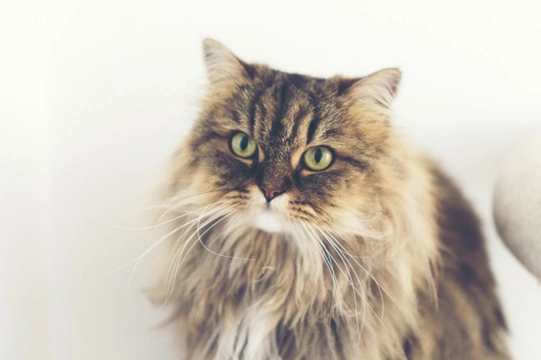
Polycystic kidney disease in Persian-type cats
Polycystic kidney disease (PKD) or autosomal polycystic kidney disease, is a genetically inherited condition that causes liquid-filled cysts to develop on the kidneys of affected cats. As it is a hereditary condition, certain breeds and types of cats are particularly renowned for having high incidence-rates of the disease, and being at risk of developing and passing on the condition to their subsequent offspring.
The Persian cat is the breed considered to have the highest incidence rate of all types of cats, with as many as 49% of Persian cats developing kidney failure at some stage in their life. As the Persian cat is such a popular breed and has played a part in the development and formation of many other breeds, various other pedigree cat breeds are considered to have elevated risk factors for the condition as well, due to sharing a common genetic ancestry.
Breeds considered to be most at risk of inheriting PKD include:
- The Persian
- The Himalayan
- The Exotic Shorthair
- The Chinchilla
- Any other breed with Persian ancestry, and any non-pedigree cat with Persian in their lineage
What is polycystic kidney disease?
PKD causes abnormal cysts filled with fluid to grow on the kidneys of the cat, which are present from birth but that grow larger as the cat ages. The amount of cysts present and the size they grow to will vary from case to case, but the growth in size of the cysts eventually leads to kidney damage, and will eventually cause the kidneys to fail.
Sadly, kidney failure usually occurs by the age of around seven years old, although again, there is a wide variance in the ultimate age at which it becomes apparent within affected cats.
How do cats acquire the condition?
PKD is an inherited condition, and is caused by an autosomal gene being passed on from one of the parent cats to the offspring. Only one of the two parent cats needs to be carrying the gene to pass it on, and if the gene is present in one of the parent cats, each of the subsequent kittens stands a 50% chance of developing PKD.
What are the symptoms of PKD in cats?
If you own a cat that may have elevated genetic risk factors for PKD and you do not know the status of the parent cats, it is important to be aware of the signs and symptoms of the condition.
- Lethargy and depression
- Weight loss
- Vomiting and nausea
- Increased levels of thirst and an abnormally high water intake
- Increased urination
- Enlarged kidneys
Formal diagnosis of PKD in cats
Your vet has two options for detecting PKD in cats: either running a genetic test using a swab from the inside of the cheek, or by conducting an ultrasound examination of the kidneys.
Treatment and management of PKD
PKD in cats is not curable, and the cysts on the kidney cannot be removed. There is also no effective way to slow down the growth of the cysts, and so treatment of PKD involves managing the condition, dealing with any side effects of the illness, and making the cat as comfortable as possible.
Some cats will live in relatively good health for several years after receiving a PKD diagnosis, and so it should not automatically be assumed that PKD will prove terminal within a short time. While most cats with PKD will not make it to old age as the kidneys usually begin to fail by around seven years old (sometimes earlier) there are exceptions, and in cases where the cysts grow particularly slowly, the affected cat may make it to old age and eventually succumb to something else entirely.
Various different methods of trying to maintain healthy kidney function for as long as possible and keep the cat comfortable may be utilised after a diagnosis of PKD:
Feeding a kidney-supporting prescription diet that is lower in phosphorous and protein than normal cat food, in order to reduce the amount of urea produced and the effort that the kidneys have to make in processing it.
Giving phosphorous-binding medications to reduce phosphorous levels.
Administering fluids subcutaneously if your cat is becoming dehydrated.
Administering anti-nausea medications if your cat vomits regularly.
Treating for hypertension if this accompanies the condition.
Testing for PKD
The presence or absence of the gene responsible for PKD in cats can be detected by means of a simple genetic test. This means that cat breeders can opt to have their cats DNA tested for the presence of the gene, before making the decision to breed. In breeds such as the Persian that have highly elevated risk factors for the condition, this is strongly recommended, and all potential buyers of a Persian kitten should ask to view testing results, or have the kitten they might be considering buying tested before committing to a purchase.
Cats that test positive for the presence of the gene should be neutered, and not bred from.



